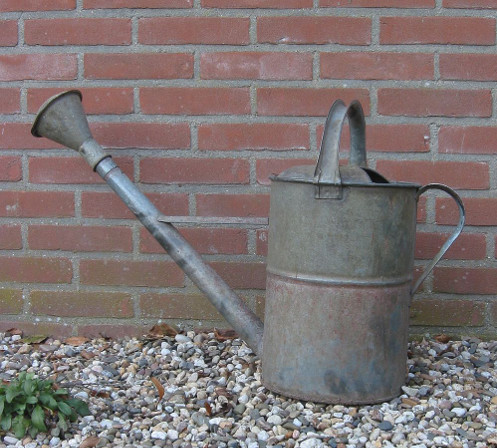Watering Cans

There is one garden implement that many people might overlook. It is humble, yet indispensable. It is the watering can. Watering cans come in all sizes from the dainty one with a long spout to carefully add a tiny stream of water to the African violet on the windowsill to the standard galvanized one that holds several gallons of water to douse that wilting coleus on the patio. Plastic, metal, they all have one thing in common: They deliver just the right amount of water to just the right place.
This is what makes them indispensable, especially now in times of water shortages. Keeping a watering can full can provide that little relief to a plant in distress when it is inappropriate to turn on the sprinkler. Depending on the weather, the potting medium, the plant’s tolerance, and many other factors, all plants are not created equal. The ficus and geranium may hang on for weeks without water, but the prayer plant may begin to fold its leaves in supplication before the next watering cycle. It could use an emergency intervention.
Most of the larger watering cans come equipped with what is called a “rose” that screws onto the end of the spout. It serves to spread the stream of water into a gentle shower — good for that flat of seedlings and to provide a little humidity to that fern. It can easily be removed if a more vigorous application is required — for filling the bird bath or nurturing that newly planted pot of herbs.
The trick is to remember to fill the can each time the hose already in use so that that backup is available when needed. And don’t stop with one, have two or even three, perhaps in different sizes, ready for any eventuality.



